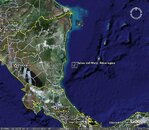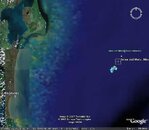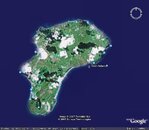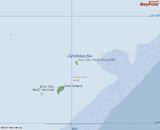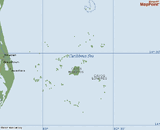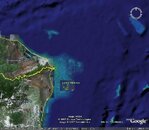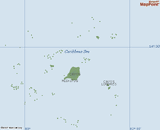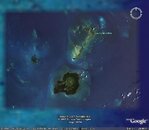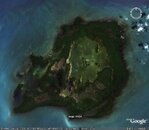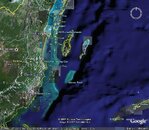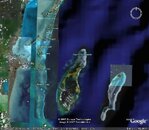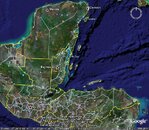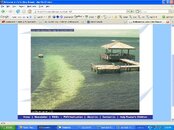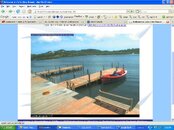You are using an out of date browser. It may not display this or other websites correctly.
You should upgrade or use an alternative browser.
You should upgrade or use an alternative browser.
Heads up for approaching Storm
- Thread starter DandyDon
- Start date
Please register or login
Welcome to ScubaBoard, the world's largest scuba diving community. Registration is not required to read the forums, but we encourage you to join. Joining has its benefits and enables you to participate in the discussions.
Benefits of registering include
- Ability to post and comment on topics and discussions.
- A Free photo gallery to share your dive photos with the world.
- You can make this box go away
- Messages
- 54,314
- Reaction score
- 8,440
- # of dives
- 500 - 999
- Messages
- 54,314
- Reaction score
- 8,440
- # of dives
- 500 - 999
- Messages
- 54,314
- Reaction score
- 8,440
- # of dives
- 500 - 999
- Messages
- 54,314
- Reaction score
- 8,440
- # of dives
- 500 - 999
From: Dr. Jeff Masters' WunderBlog
Posted by: JeffMasters, 12:37 PM EDT on September 03, 2007
Hurricane Felix put on an incredibly ferocious burst of intensification last night, winding up into a small but potentially catastrophic Category 5 hurricane. Felix now holds the record for shortest time for an Atlantic storm to intensify to Category 5 strength. Felix required just 51 hours to reach Category 5 strength after it started as a tropical depression. That is a truly remarkable intensification rate, considering most tropical cyclones take 3-5 days to organize into a Category 1 hurricane. The tracking coordinates for Felix show that it has spent more of its life at Category 5 strength than any other classification.
- Messages
- 54,314
- Reaction score
- 8,440
- # of dives
- 500 - 999
Haven't heard. I hope the planes were empty landing and full taking off the last couple of days. Most recent conditions I have from Weather Channel for Roatan is 90F with 15 mph wind from East.jfcl01:so, what's going on in the bay islands and on the Honduran coast right now? Have all the tourists started heading home?
Check Coco Views Cams here CCV webcams I just took these pics from those cams, altho I cannot say that they are indeed live feeds....?
Attachments
- Messages
- 10,951
- Reaction score
- 4,148
- # of dives
- None - Not Certified
DandyDon:Haven't heard.
The guests are apparently being moved.
Check Coco Views Cams here CCV webcams I just took these pics from those cams, altho I cannot say that they are indeed live feeds....?
They are dated and time stamped. They now seem to be shut down. For live (or close to it) commentary, see http://www.websitetoolbox.com/tool/post/ccv/vpost?id=2125733
and http://www.websitetoolbox.com/tool/post/ccv/vpost?id=2125263
"Well the hurricane party is going on at the bar eve as we post this.
They're telling us that the government is mandating an evacuation of the island - they haven't told us just how that's suppose to happen.
The staff is telling we will be moved to a hotel in French Harbour-maybe. Or we may be moved to some of the larger houses like the Jackson Mansion - with 6-8 people in a room.
We'll have an update at noon on Monday to let us know what we are going to do.
At this point things don't look too good.
Say a little prayer for us tonight when you go to bed.
Monday is going to be crazy, Tuesday will be worse, and Wednesday after the storm passes - anything goes.
"
Hank49
Contributor
catherine96821:Where is Hank exactly?
(batten down the hatches, call in and count the kids, friend)
http://www.belizeit.com/map.htm
See Dangriga? Just north of there the coastline turns due west and just north of that is Mullins River. I'm between Mullins River and that north facing bit of coast. It looks like we're safe now....unless this thing goes "BOING" off the mainland and heads more north.
I hope all the people got off the Corn Islands...although the storm has weakened this afternoon.
- Messages
- 10,951
- Reaction score
- 4,148
- # of dives
- None - Not Certified
Tourists Flee As Felix Nears
Updated 4:55 PM ET September 3, 2007
By ESTEBAN FELIX
SAN PEDRO SULA, Honduras (AP) - Planes shuttled hundreds of tourists from the island resorts of Honduras and Belize in a desperate airlift Monday as Hurricane Felix's pounding rain and punishing winds bore down on the Central American coast.
The powerful, Category 4 storm spurred Grupo Taca Airlines to provide special free flights to the mainland. Planes were quickly touching down and taking off again to scoop up more tourists. Some 1,000 people were evacuated from the Honduran island of Roatan, popular for its pristine reefs and diving resorts. Another 1,000 were removed from low-lying coastal areas and smaller islands.
Felix's top winds weakened slightly to 145 mph as it headed west, but the U.S. National Hurricane Center warned that it could easily strengthen into catastrophic storm again before landfall. It was projected to rake the Honduran coast and slam into southern Belize on Wednesday before cutting across northern Guatemala and southern Mexico.
Felix seemed likely to make landfall on the Miskito Coast, a remote, swampy jungle along the Honduras-Nicaragua border where Honduran officials were trying to find enough gas to evacuate Miskito Indians, who speak a mix of Spanish and a local creole, and usually get around in canoes.
"There's nowhere to go here," said teacher Sodeida Rodriguez, 26, who said residents in wooden shacks were seeking shelter but those with concrete homes were staying put.
Provincial health official Efrain Burgos said 18,000 people were in danger on the Miskito coast, and urged them to find their own way to higher ground.
"We're asking the people who are on the coasts to find a way to safer areas, because we don't have the capability to transport so many people," he said.
The storm was following the same path as 1998's Hurricane Mitch, a sluggish storm that stalled for a week over Central America, killing nearly 11,000 people and leaving more than 8,000 missing, mostly in Honduras and Nicaragua. But Felix was moving at 21 mph, much faster than Mitch.
By Monday afternoon, crashing waves reached 15 feet higher than normal on Honduras' coast, but there was no rain yet.
"We are ready to face an eventual tragedy," said Roatan fire chief Douglas Fajardo.
Most tourists took the free flights out, but locals prepared to ride out the storm.
"We know it's a tremendous hurricane that's coming," said real estate worker Estella Marazzito.
The hurricane center said Felix could dump up to 12 inches of rain in some areas, possibly bringing flash floods and mudslides. As far away as Tegucigalpa, more than 100 miles inland, authorities cleared vendors from markets prone to flooding.
Across the border in Belize City, skies grew increasingly cloudy and winds kicked up as residents boarded windows and lined up for gas. Tourists competed for the last seats on flights to Atlanta and Miami.
"I just wish they had more airplanes to take care of everyone who has to leave," said Atlanta, Georgia, resident Mitzi Carr, 48, who cut short her weeklong vacation on Hatchet Caye.
Belize is still cleaning up from last month's Hurricane Dean, which killed 28 people as plowed through the Caribbean and slammed into Mexico as a Category 5 storm. Dean damaged crops everywhere it passed, including an estimated $100 million in Belize alone.
Over the weekend, Felix toppled trees, flooded homes and forced tourists indoors on the Dutch islands of Aruba, Curacao and Bonaire, but caused little damage. It then grew to a Category 5 storm Monday before losing a bit of its punch.
This is only the fourth Atlantic hurricane season since 1886 with more than one Category 5 hurricane, according to the U.S. National Oceanic and Atmospheric Administration. Only 31 such storms have been recorded in the Atlantic, including eight in the last five seasons.
If Felix regains Category 5 winds before striking land, it would be the first time in recorded history that two such killer storms have made landfall in the same season, hurricane specialist Jamie Rhome said in Miami.
At 2 p.m. EDT, Felix remained a fearsome hurricane, though it had a very small wind field, with hurricane-force winds extending just 30 miles from its center. It was centered 305 miles east of the Nicaragua-Honduras border.
Off Mexico's Pacific coast, meanwhile, Tropical Storm Henriette was nearing hurricane strength on a path to hit the resort-studded tip of the Baja California Peninsula on Tuesday.
With maximum sustained winds near 70 mph, Henriette caused flooding and landslides that killed six people in Acapulco. Three died when a boulder fell on their home, and three when a landslide hit their house.
At 2 p.m. EDT), Henriette was centered 225 miles south-southeast of the tip of the peninsula, pushing waves up to 22 feet high as it moved northwest at 12 mph.
Meterologist Rebecca Waddington warned that both hurricanes could shift course. "Even if the forecast is perfect, that's only forecasting where the center of the storm is going to go," she said. "So everyone in the area needs to be aware of it."
___
Associated Press Writers John Pain in Miami and Olga Rodriguez in Belize City contributed to this report.
Updated 4:55 PM ET September 3, 2007
By ESTEBAN FELIX
SAN PEDRO SULA, Honduras (AP) - Planes shuttled hundreds of tourists from the island resorts of Honduras and Belize in a desperate airlift Monday as Hurricane Felix's pounding rain and punishing winds bore down on the Central American coast.
The powerful, Category 4 storm spurred Grupo Taca Airlines to provide special free flights to the mainland. Planes were quickly touching down and taking off again to scoop up more tourists. Some 1,000 people were evacuated from the Honduran island of Roatan, popular for its pristine reefs and diving resorts. Another 1,000 were removed from low-lying coastal areas and smaller islands.
Felix's top winds weakened slightly to 145 mph as it headed west, but the U.S. National Hurricane Center warned that it could easily strengthen into catastrophic storm again before landfall. It was projected to rake the Honduran coast and slam into southern Belize on Wednesday before cutting across northern Guatemala and southern Mexico.
Felix seemed likely to make landfall on the Miskito Coast, a remote, swampy jungle along the Honduras-Nicaragua border where Honduran officials were trying to find enough gas to evacuate Miskito Indians, who speak a mix of Spanish and a local creole, and usually get around in canoes.
"There's nowhere to go here," said teacher Sodeida Rodriguez, 26, who said residents in wooden shacks were seeking shelter but those with concrete homes were staying put.
Provincial health official Efrain Burgos said 18,000 people were in danger on the Miskito coast, and urged them to find their own way to higher ground.
"We're asking the people who are on the coasts to find a way to safer areas, because we don't have the capability to transport so many people," he said.
The storm was following the same path as 1998's Hurricane Mitch, a sluggish storm that stalled for a week over Central America, killing nearly 11,000 people and leaving more than 8,000 missing, mostly in Honduras and Nicaragua. But Felix was moving at 21 mph, much faster than Mitch.
By Monday afternoon, crashing waves reached 15 feet higher than normal on Honduras' coast, but there was no rain yet.
"We are ready to face an eventual tragedy," said Roatan fire chief Douglas Fajardo.
Most tourists took the free flights out, but locals prepared to ride out the storm.
"We know it's a tremendous hurricane that's coming," said real estate worker Estella Marazzito.
The hurricane center said Felix could dump up to 12 inches of rain in some areas, possibly bringing flash floods and mudslides. As far away as Tegucigalpa, more than 100 miles inland, authorities cleared vendors from markets prone to flooding.
Across the border in Belize City, skies grew increasingly cloudy and winds kicked up as residents boarded windows and lined up for gas. Tourists competed for the last seats on flights to Atlanta and Miami.
"I just wish they had more airplanes to take care of everyone who has to leave," said Atlanta, Georgia, resident Mitzi Carr, 48, who cut short her weeklong vacation on Hatchet Caye.
Belize is still cleaning up from last month's Hurricane Dean, which killed 28 people as plowed through the Caribbean and slammed into Mexico as a Category 5 storm. Dean damaged crops everywhere it passed, including an estimated $100 million in Belize alone.
Over the weekend, Felix toppled trees, flooded homes and forced tourists indoors on the Dutch islands of Aruba, Curacao and Bonaire, but caused little damage. It then grew to a Category 5 storm Monday before losing a bit of its punch.
This is only the fourth Atlantic hurricane season since 1886 with more than one Category 5 hurricane, according to the U.S. National Oceanic and Atmospheric Administration. Only 31 such storms have been recorded in the Atlantic, including eight in the last five seasons.
If Felix regains Category 5 winds before striking land, it would be the first time in recorded history that two such killer storms have made landfall in the same season, hurricane specialist Jamie Rhome said in Miami.
At 2 p.m. EDT, Felix remained a fearsome hurricane, though it had a very small wind field, with hurricane-force winds extending just 30 miles from its center. It was centered 305 miles east of the Nicaragua-Honduras border.
Off Mexico's Pacific coast, meanwhile, Tropical Storm Henriette was nearing hurricane strength on a path to hit the resort-studded tip of the Baja California Peninsula on Tuesday.
With maximum sustained winds near 70 mph, Henriette caused flooding and landslides that killed six people in Acapulco. Three died when a boulder fell on their home, and three when a landslide hit their house.
At 2 p.m. EDT), Henriette was centered 225 miles south-southeast of the tip of the peninsula, pushing waves up to 22 feet high as it moved northwest at 12 mph.
Meterologist Rebecca Waddington warned that both hurricanes could shift course. "Even if the forecast is perfect, that's only forecasting where the center of the storm is going to go," she said. "So everyone in the area needs to be aware of it."
___
Associated Press Writers John Pain in Miami and Olga Rodriguez in Belize City contributed to this report.



